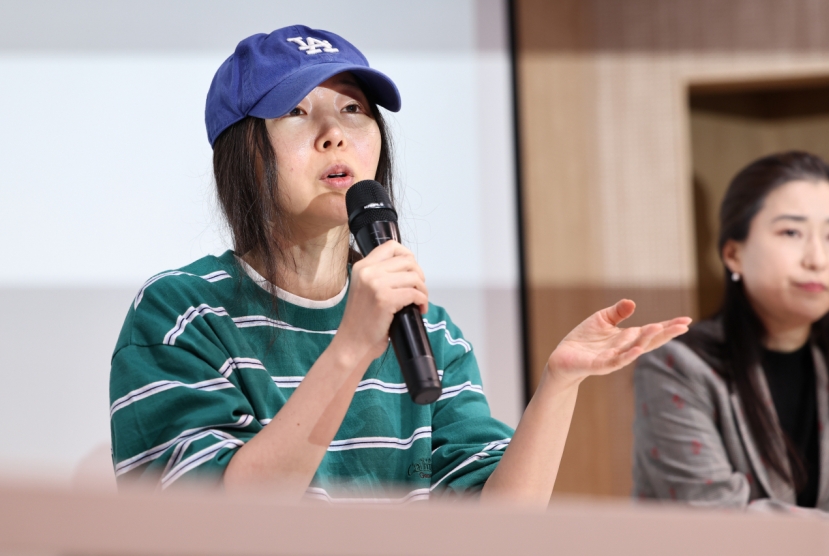Chuseok is a time for family gatherings to thank ancestors for a bountiful fall harvest. People travel long hours to return to their hometowns where their ancestral graves are located. Though less chaotic than in the past, more than half the Korean population travels.

In recent years, Chuseok has become a commercial holiday, as people feel pressured to send gifts. Marketers use a wide range of traditional Korean iconography to push Chuseok gifts with the idea being that every good Korean should send a gift. It is the same technique that advertisers in the U.S. use to sell Christmas gifts or Halloween candy.
Marketers use images of beautiful people dressed in hanbok, traditional Korean clothes, and gifts, but one of the most popular gifts is Spam, which first came to Korea amid the Korean War. This raises the interesting question of what Korean tradition means today.
Like any tradition, “Korean tradition” is difficult to define. A random poll of subway riders in Seoul would most likely turn up responses such as “hanbok,” “kimchi” and, of course, “Chuseok.” To most people, definitions of Korean tradition center on concrete images and practices in everyday life.
The problem, of course, is that most Koreans rarely, if ever, wear a hanbok, and even fewer live in a “hanok,” or traditionally built house. They may see these things on TV or on a visit to a curated hanok village, but they are remote from daily life. The images are Korean because the public discourse promoted by the government and media tells them so, but they are also foreign because they are not part of daily life.
The detachment of tradition from everyday life is the norm, not the exception. In neighboring Japan, for example, marketers use images of kimono-clad women, Japanese gardens and traditional architecture to create a “Japanese atmosphere,” but most Japanese rarely encounter these images in daily life. Tatami rooms in houses are becoming increasingly rare. To Japanese who live in apartments in large cities, this image of Japan is as foreign as the curated image of Korea is to Koreans.
The loss of tradition is often confused with Westernization, but reality is that tradition has largely disappeared everywhere with economic development and advancing globalization. This has created a standardized lifestyle with visible differences coming from local economic and social structures rather than tradition.
Amid the heavy weight of globalization, everyday practices are what remains of tradition, with food culture being an obvious example. Food changes over time, but it changes far more slowly than many other aspects of material culture. Koreans who have never lived in a hanok and have never worn a hanbok still eat kimchi almost daily, if not several times a day. Western gourmet food is increasingly popular, but Koreans still eat mostly Korean food at home.
Everyday practices also change slowly. The number of families performing a formal ceremony in honor of ancestors has decreased over time, but the special Chuseok food and family gathering have remained. More than Chuseok, it is the practices found in the texture of everyday life that live on as Korean. Everything from the way children are taught to use polite language to friends competing to pick up the tab for drinks are everyday practices that have changed little over the years.
Increasingly, young Koreans are frustrated by a public discourse that lauds a Korean tradition of the imagination while ignoring problems in everyday life. For years, politicians have successfully used Korean tradition to position themselves positively for political combat. To do so, they have cast themselves as defenders of Korean tradition, but have rarely stopped to think about what “tradition” means. This explains why they blindly support proposals to rebuild Joseon era buildings or to “globalize” traditional Korean culture without considering the interests and needs of the intended receivers.
Young Koreans want politicians to address economic and social issues that directly affect their lives. They have little interest in the Korean tradition of public discourse and view traditional images that marketers like to play with as part of the overflow of visual stimulus.
In everyday practice, of course, young Koreans are just as “Korean” as older generations. The detachment from tradition is rejection of one-dimensional definitions of Korean tradition, not a rejection of tradition itself. Indeed, young Koreans are rediscovering tradition and incorporating it into the everyday practice in new ways. The boom makgeolli rice wine is but one example, and the popularity of impromptu flea markets as a community activity is another.
By Robert J. Fouser
Robert J. Fouser, a former associate professor of Korean language education at Seoul National University, writes on Korea from Ann Arbor, Michigan. – Ed


![[Herald Interview] 'Amid aging population, Korea to invite more young professionals from overseas'](http://res.heraldm.com/phpwas/restmb_idxmake.php?idx=644&simg=/content/image/2024/04/24/20240424050844_0.jpg&u=20240424200058)















